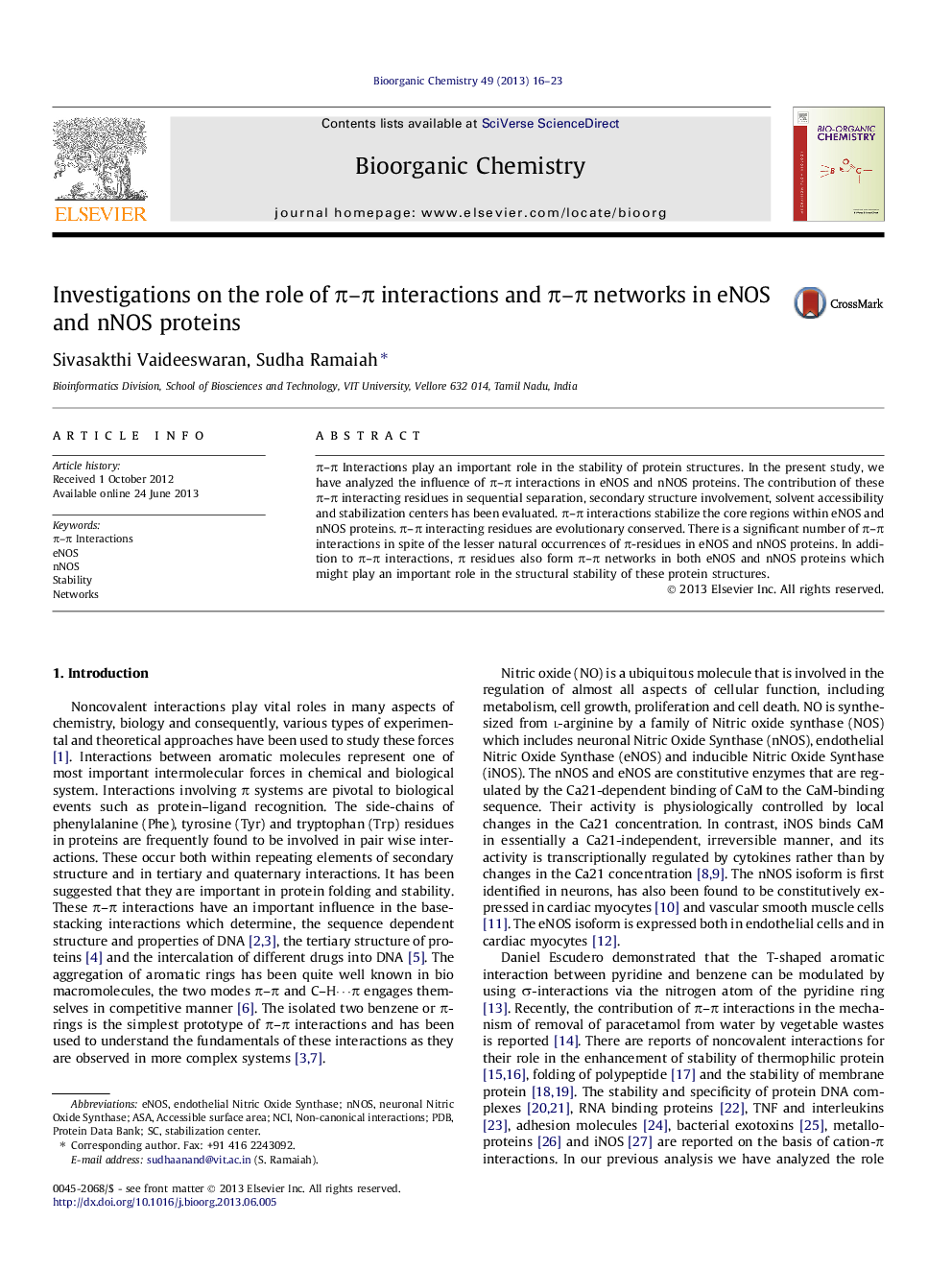| Article ID | Journal | Published Year | Pages | File Type |
|---|---|---|---|---|
| 1356253 | Bioorganic Chemistry | 2013 | 8 Pages |
•Analysis of the role of π–π interactions in the structural stability of eNOS and nNOS proteins.•π–π Interacting residues in eNOS and nNOS proteins are in solvent buried region.•Amino acid residues involved in π–π interactions are evolutionary conserved.•Long range π–π interactions are the predominant type of interactions.•π residues also form π–π networks in both eNOS and nNOS proteins.
π–π Interactions play an important role in the stability of protein structures. In the present study, we have analyzed the influence of π–π interactions in eNOS and nNOS proteins. The contribution of these π–π interacting residues in sequential separation, secondary structure involvement, solvent accessibility and stabilization centers has been evaluated. π–π interactions stabilize the core regions within eNOS and nNOS proteins. π–π interacting residues are evolutionary conserved. There is a significant number of π–π interactions in spite of the lesser natural occurrences of π-residues in eNOS and nNOS proteins. In addition to π–π interactions, π residues also form π–π networks in both eNOS and nNOS proteins which might play an important role in the structural stability of these protein structures.
Graphical abstractπ–π Interactions of aromatic amino acids in nNOS and eNOS proteins were analyzed. The interactions between residues Phe 439, Phe 534 in nNOS PDB ID 1QW6 and Tyr 333, Trp 332 in eNOS PDB ID 1RS8 are displayed.Figure optionsDownload full-size imageDownload as PowerPoint slide
